import numpy as np
from sklearn.datasets import load_iris
#1.计算鸢尾花花瓣长度的最大值,平均值,中值,均方差。
data=load_iris()
print(data)
print(type(data))
print(data.keys(),data.feature_names)
iris=data.data
print(iris)
petal_length=iris[:,2]
print(petal_length)
print("最大值",np.max(petal_length))
print("平均值",np.mean(petal_length))
print("最小值",np.min(petal_length))
print("均方差",np.std(petal_length))
print("中值",np.median(petal_length))
结果:
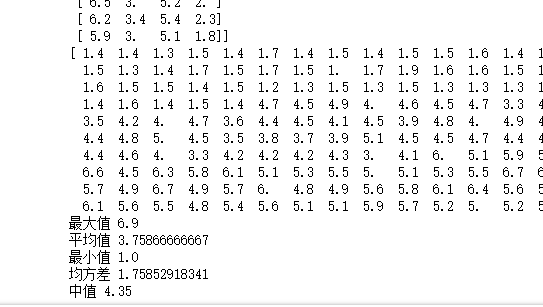
#2.用np.random.normal()产生一个正态分布的随机数组,并显示出来。 import numpy as np import matplotlib.pyplot as plt mu = 5 sigma = 5 num = 1000 rand_data = np.random.normal(mu, sigma, num) count, bins, ignored = plt.hist(rand_data, 30, normed=True) plt.plot(bins, 1/(sigma * np.sqrt(2 * np.pi)) *np.exp( - (bins - mu)**2 / (2 * sigma**2)), linewidth=2, color='r') plt.show()
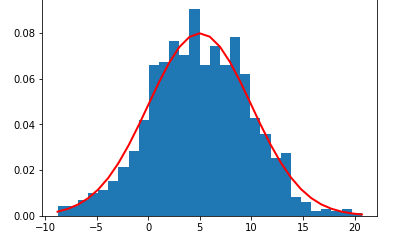
#3.np.random.randn()产生一个正态分布的随机数组,并显示出来。 Data=np.random.randn(30) print(Data)
结果:

#4.显示鸢尾花花瓣长度的正态分布图 import numpy as np import matplotlib.pyplot as plt mu = np.mean(petal_length) # 期望值 sigma = np.std(petal_length) # 标准差 num = 10000 #个数为10000 rand_data = np.random.normal(mu, sigma, num) print(rand_data.shape,type(rand_data)) count, bins, ignored = plt.hist(rand_data, 30, normed=True) plt.plot(bins, 1/(sigma * np.sqrt(2 * np.pi)) *np.exp( - (bins - mu)**2 / (2 * sigma**2)), linewidth=2, color='r') plt.show()
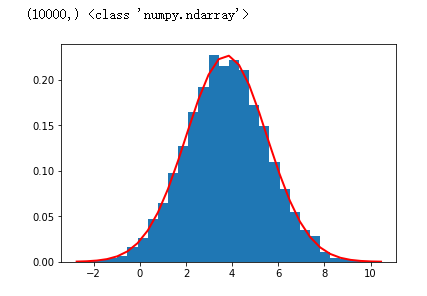
#曲线图 plt.plot(np.linspace(0,150,num=150),petal_length,'y') plt.show()
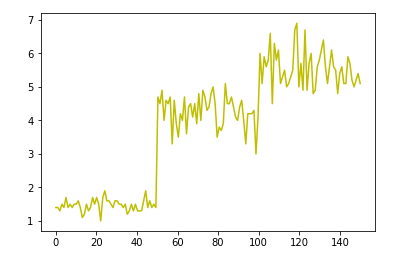
#散点图 plt.scatter(np.linspace(0,160,num=150),petal_length,alpha=1,marker='x',color='red') plt.show()
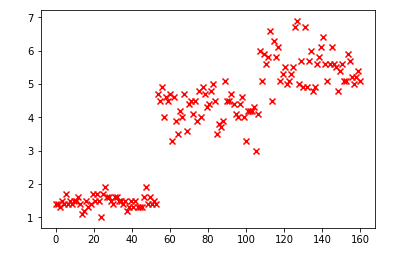





















 653
653











 被折叠的 条评论
为什么被折叠?
被折叠的 条评论
为什么被折叠?








